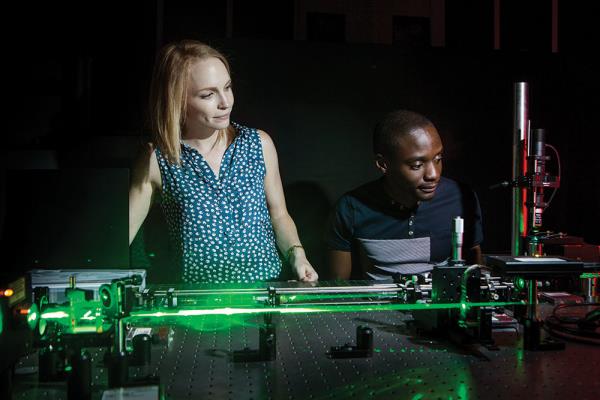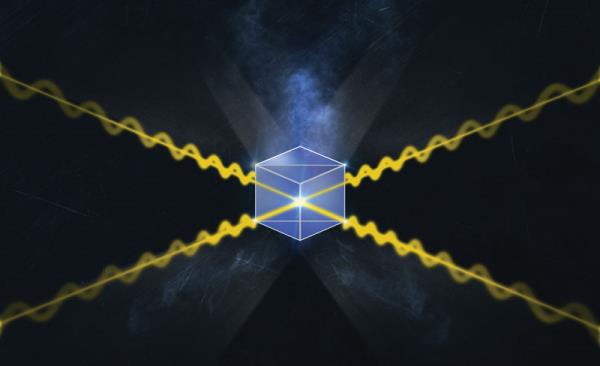31 October 2017

An experiment being conducted in the Structured Light Laboratory at the University of the Witwatersrand, South Africa. PHOTO Wits University
Researchers from Scotland and South Africa say they have demonstrated quantum teleportation of patterns of light, paving the way for high bit rate secure long distance quantum communication.
According to the researchers – from South Africa’s University of the Witwatersrand (Wits) and Heriot-Watt University in Scotland – current communication systems are very fast but not fundamentally secure. To make them secure, researchers have used the laws of nature for encoding by exploiting the properties of the quantum world.
One such property is ‘entanglement’. When two particles are entangled, a measurement on one immediately changes the state of the other, no matter how far apart they are. Entanglement is one of the core resources needed to realise a quantum network.
According to the researchers, quantum communication over long distances is integral to information security. They say it has been demonstrated in free space and fibre with two-dimensional states, recently over distances exceeding 1,200km between satellites. But using only two states is said to reduce the photons’ information capacity, so while the link is secure it remains slow.
Overcoming this requires a higher-dimensional ‘alphabet’, for example, using patterns of light, of which there are an infinite number. One such pattern set is the orbital angular momentum (OAM) of light. The researchers have found that increased bit rates can be achieved by using OAM as the carrier of information.
However, such photon states decay when transmitted over long distances, for example, due to mode coupling in fibre or turbulence in free space, thus requiring a way to amplify the signal.
While such amplification is not possible in the quantum world, it is possible to create a ‘quantum repeater’ which is analogous to fibre repeaters in classical optical networks.

The core element of the quantum repeater is a cube of glass. Researchers put two independent photons in, and as long as they could detect two photons coming out the other sides, they knew entanglement swapping was possible. PHOTO Wits University
An integral part of a quantum repeater is the ability to entangle two photons that have never interacted. This so-called ‘entanglement swapping’ is accomplished by interfering two photons from independent entangled pairs, resulting in the remaining two photons becoming entangled.
The scientists say this allows the establishment of entanglement between two distant points without requiring one photon to travel the entire distance, thus reducing the effects of decay and loss. It also means that you don’t have to have line of sight between the two places.
As a result, the information of one photon can be transferred or “teleported” to the other. “If two photons are entangled and you change a value on one of them, then the other one automatically changes too,” says the researchers. “This happens even though the two photons are never connected and are in fact in two completely different places.”
The team from Wits and Heriot Watt say they have now performed the first demonstration of entanglement swapping and teleportation for OAM states of light. They claim their experiments showed that quantum correlations could be established between previously independent photons, and that this could be used to send information across a virtual link.
The researchers add that, importantly, the scheme is scalable to higher dimensions, paving the way for long distance quantum communication with high information capacity.
Professor Andrew Forbes of the Structured Light Laboratory at Wit’s School of Physics says: “We are continuing with this work and looking at quantum key distribution across a virtual link, as well as introducing noise to the link and attempting to show robust communication over long distance even in the presence of noise. With these advances we will have a practical quantum repeater for communication.”










